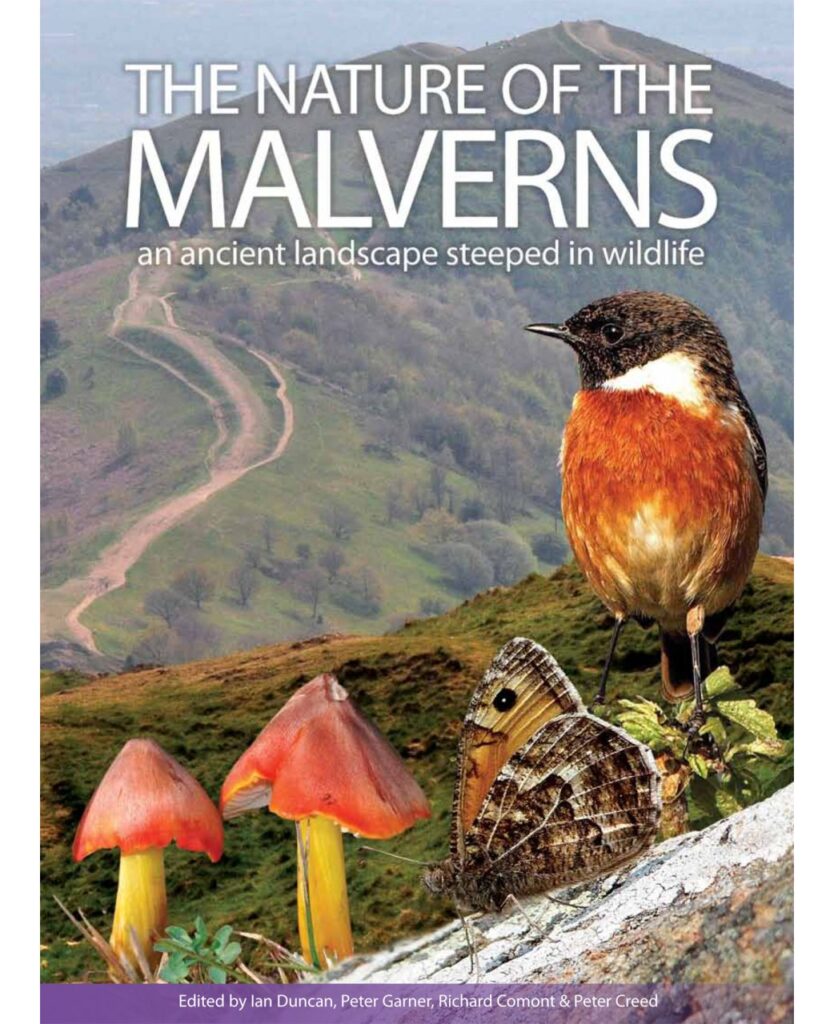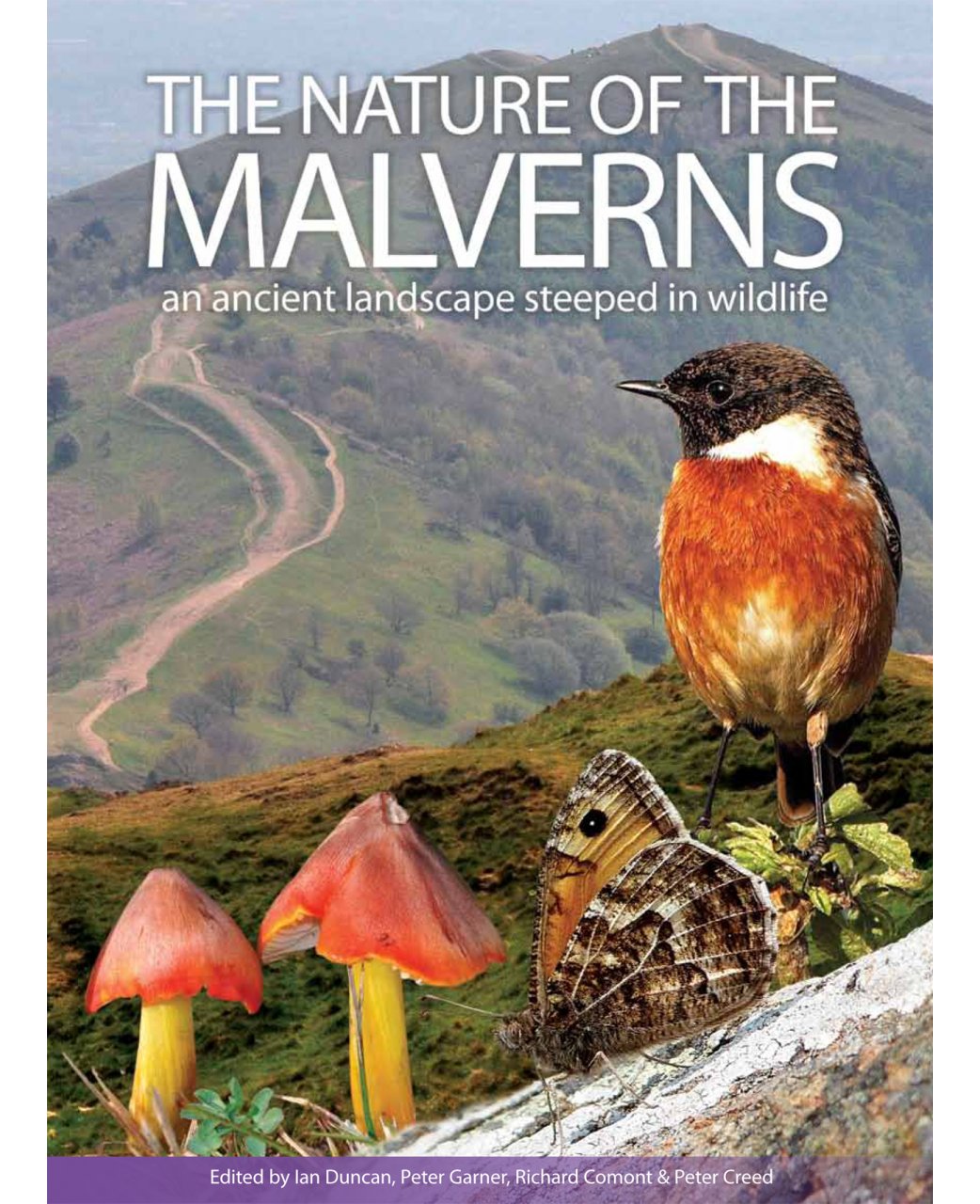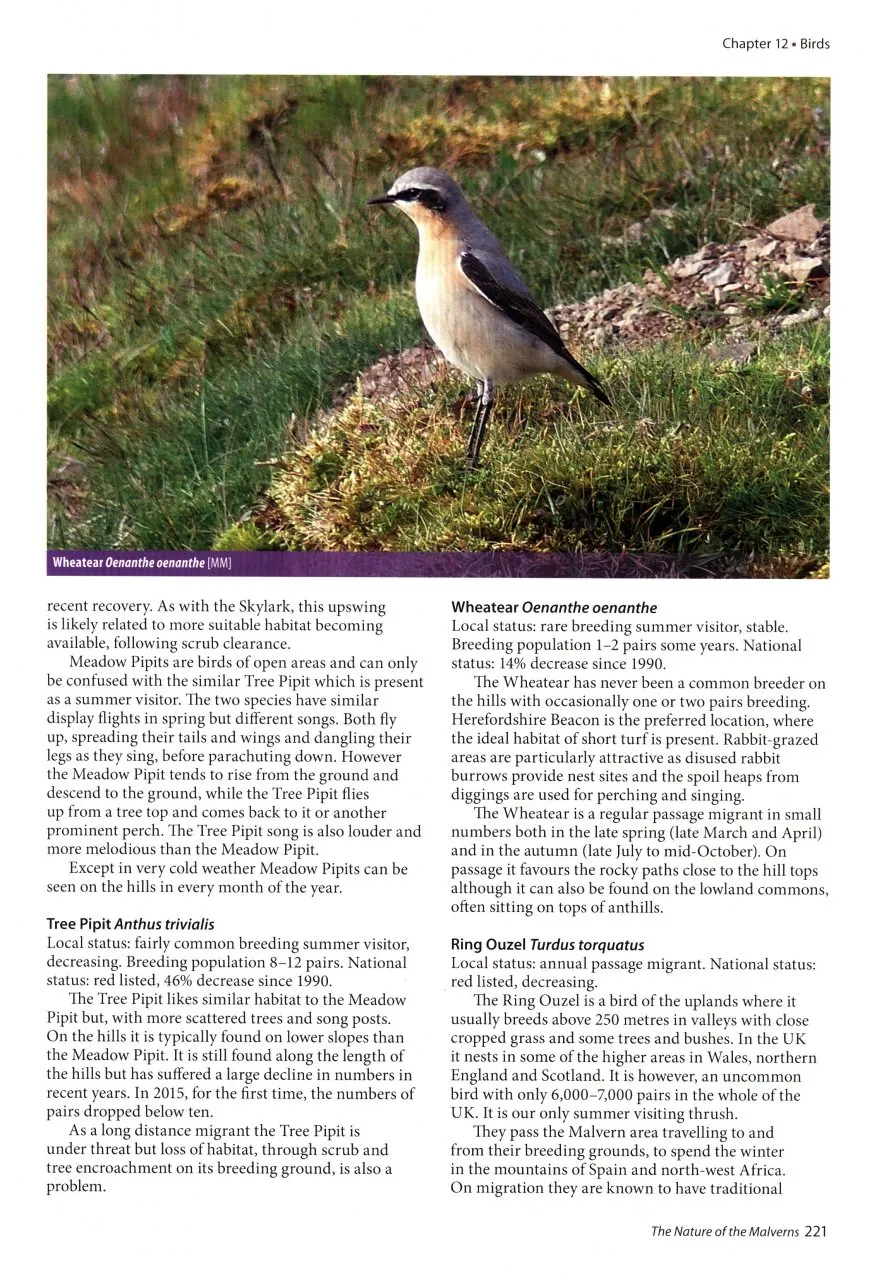This is the second in a projected series of detailed guides to some of Britain’s best wildlife localities, and, by an amazing coincidence, both of them are in the same county, Worcestershire. Like The Nature of Wyre (reviewed in BW 27: 224), The Nature of the Malverns is in large format with colour images on every page. The chapters vary in length, and most of them wade through the plant, animal and fungal world in great detail, starting with ‘the flora’ and ending with birds and mammals. By far the largest, with 65 pages, is devoted to insects (plus 12 pages more on ‘other invertebrates’). The name Malvern means ‘bare hill’. It looks like a bit of rocky upland parachuted into the Severn vale. Everyone should walk the Malverns at least once in their life, and, judging from the aerial shots of the hills, it looks as though everyone has. The area was protected from development by Act of Parliament in 1884, and today it is looked after by the Malvern Hills Trust. It is also an AONB, and much of the Malverns is also an SSSI. But that does not mean that everything is safe; there is too much scrub and bracken; there has been some loss, and the Pearl-bordered and High Brown Fritillaries, for example, no longer fly over the Malverns as they did when I was a teenager. But as well as losses there are gains: the roadstone quarries that bit into the hills now contain clear pools full of Perch and Rudd.
View this book on the NHBS website
All the notable woodlice, or grasshoppers, or waxcap fungi that live here are documented, along with their high-quality colour images. The approach risks losing the big picture amid all the microscopic detail – for this is a tapestry examined stitch by stitch – but the point of this series is to focus on wildlife up close, and especially species likely to be missed unless looked for. The species chapters are bookended by brief accounts of the landscape and its history, and with a nod towards its future. My main beef is with the editors’ strange insistence on anonymity. It is clear from the acknowledgements that a great many local naturalists had a hand in this book (and they apparently provided their services free of charge), but it is impossible to know who wrote what. This is all very modest but I think that the reader has a right to know, and this reader/reviewer particularly wants to know the name of the hero(es) who described the 2,800 species of insect without, so far as he can see, leaving anything out.


